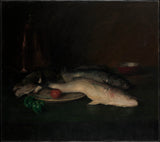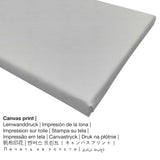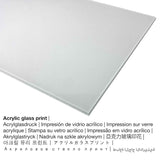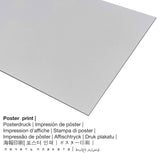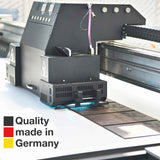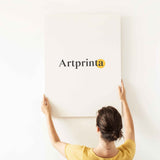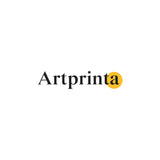William Merritt Chase, 1908 - Ndụ ka bụ: Azụ - ọmarịcha nka
Ụtụ gụnyere. Mbupu gbakọrọ na ndenye ọpụpụ.
Ihe osise a karịrị afọ 110 akpọrọ aha Still Life: Fish e sere ya onye echiche artist William Merritt Chase. E ji nha ya see nke mbụ ya: 40 1/8 x 45 1/16 na (101,9 x 114,5 cm) na e ji teknuzu nke mmanụ na kwaaji. Furthermore, the work of art belongs to the The Metropolitan Museum of Art's digital collection, which is one of the world's largest and finest art museums, which includes more than two million works of art spanning five thousand years of world culture, from prehistory to the present and from every part of the globe.. We are delighted to state that the ngalaba ọha artwork na-nyere na n'ikike nke Ụlọ ihe ngosi nka nke Metropolitan, New York, George A. Hearn Fund, 1908. : George A. Hearn Fund, 1908. Besides this, the alignment is landscape with a ratio of 1.2: 1, nke pụtara na ogologo bụ 20% ogologo karịa obosara. William Merritt Chase was a male painter, whose art style can primarily be classified as Impressionism. The artist was born in the year 1849 na Williamsburg, Wayne County, Indiana, United States wee nwụọ mgbe ọ dị afọ 67 na 1916 na New York City, New York steeti, United States.
Ozi ihe osise sitere n'ụlọ ngosi ihe mgbe ochie (© - site na The Metropolitan Museum of Art - www.metmuseum.org)
Beginning in 1904, Chase made many large-scale still-life paintings of fish, usually during his summer teaching trips to Europe. Executed with the bravura brushwork and dark palette of his early Munich period, this painting shows the influence of Chase's contemporary, the French artist Antoine Vollon, and of the seventeenth-century Spanish still lifes that Vollon also appreciated. The canvas shows a tabletop with a plate containing a striped bass and a salmon; a weakfish lies directly on the table and a bowl appears in the background. Chase's goal seems to have been to make what he called "an uninteresting subject so inviting and entertaining by means of fine technique that people will be charmed at the way you've done it."Writing in "The New Republic" in March 1917, the American connoisseur and collector Leo Stein commented on Chase's still-life paintings of fish: "Of all non-sentimental still life . . . they are with their bulging mass and sweeping line the most expressive. Chase seems to take a saturated satisfaction in the swell and swing of the thick soft-bodied fish. They give far more result at a lesser price of organization than groups of smaller or less expressively shaped objects."
Nkọwa na mpempe nka mbụ
| Aha nke eserese ahụ: | "Still Life: Fish" |
| nhazi ọkwa: | sere |
| Okwu nche anwụ: | nkà nke oge a |
| Narị afọ nka: | 20th narị afọ |
| Emepụtara n'afọ: | 1908 |
| Afọ nka: | karịa afọ 110 |
| Usoro izizi: | mmanụ na kwaaji |
| Akụkụ izizi (ọrụ nka): | 40 1/8 x 45 1/16 na (101,9 x 114,5 cm) |
| Ụlọ ihe ngosi nka: | Museumlọ ihe ngosi nka nke Obodo |
| Ebe ngosi nka: | New York City, New York, Njikota Obodo Amerika |
| Weebụsaịtị ihe ngosi nka: | Museumlọ ihe ngosi nka nke Obodo |
| Akwụkwọ ikike nka: | ngalaba ọha |
| Site n'aka: | Ụlọ ihe ngosi nka nke Metropolitan, New York, George A. Hearn Fund, 1908 |
| Ebe kredit nke ọrụ nka: | George A. Hearn Fund, 1908 |
Ose okwu
| Ihe nkiri: | William Merritt Chase |
| Aha nka ndị ọzọ: | chase william merritt, Chase William Merritt, Chase William Merrit, w.m. chase, wm m. chase, w.m m. chase, chase w.m., chase william, chase w.m., Chase William M., William Merritt Chase, William Chase, William Merrit Chase, Chase |
| okike onye nka: | nwoke |
| Obodo onye nka: | American |
| Ọrụ nke onye na-ese ihe: | onye na-ese ihe |
| Obodo obibi: | United States |
| nhazi ọkwa: | omenkà nke oge a |
| Ụdị nka: | Mmetụta |
| Oge ndu: | 67 afọ |
| Afọ ọmụmụ: | 1849 |
| Ebe amụrụ onye: | Williamsburg, Wayne County, Indiana, Njikota Obodo Amerika |
| Afọ ọnwụ: | 1916 |
| Obodo ọnwụ: | New York City, New York State, Njikota Obodo Amerika |
Họrọ nhọrọ akụrụngwa gị
In the dropdown lists right next to the product offering you can select your favorite size and material. Pick your preferred material and size among the options:
- Mbipụta nke aluminom: An Aluminium Dibond print is a material with an impressive effect of depth.
- Mbipụta enyo acrylic: The acrylic glass print, which is sometimes labelled as a plexiglass print, will transform the original into gorgeous wall décor. The artwork will be made thanks to modern UV direct printing machines. Our acrylic glass protects your custom art print against light and heat for between four and 6 decades.
- Mbipụta akwụkwọ mmado (akwa akwa akwa): Our poster print is a printed flat canvas paper with a slight texture on the surface. Please bear in mind, that depending on the size of the poster we add a white margin between 2-6cm round about the print motif, which facilitates the framing.
- Mbipụta kanvas: The canvas direct print is a printed canvas mounted on a wood frame. It has a unique impression of three-dimensionality. The canvas print creates a attractive and positive feeling. Canvas prints are relatively low in weight, which means that it is quite simple to hang the Canvas print without the use of any wall-mounts. Because of thata canvas print is suited for all types of walls.
Ozi ihe ahaziri ahazi
| Ụdị ngwaahịa: | nka nka |
| Usoro mmeputakwa: | dijitalụ mmeputakwa |
| Usoro mmepụta: | mbipụta dijitalụ (Mbipụta UV ozugbo) |
| Production: | emepụtara na Germany |
| Stockdị ngwaahịa: | a na-achọ |
| Eji ngwaahịa a chọrọ: | foto mgbidi, ụlọ ihe osise nka |
| Nhazi nka nka: | usoro odida obodo |
| Ụdị anya: | 1.2: 1 ogologo ruo obosara |
| Nsonaazụ: | ogologo bụ 20% ogologo karịa obosara |
| Nhọrọ dị: | Mbipụta kwaaji, mbipụta enyo acrylic (nwere ezigbo mkpuchi iko), mbipụta ọla (aluminium dibond), mbipụta akwụkwọ mmado (akwụkwọ kwaaji) |
| Nhọrọ nke Canvas Mbipụta (akwa akwa na etiti ihe ndọtị): | 60x50cm - 24x20", 120x100cm - 47x39", 180x150cm - 71x59" |
| Mpempe iko acrylic (nwere ezigbo mkpuchi iko) nha dị iche iche: | 60x50cm - 24x20", 120x100cm - 47x39", 180x150cm - 71x59" |
| Ụdị akwụkwọ mmado (akwụkwọ kwaaji) dị iche iche: | 60x50cm - 24x20", 120x100cm - 47x39" |
| Aluminium dibond ebipụta (ihe aluminium) nha dị iche iche: | 60x50cm - 24x20", 120x100cm - 47x39" |
| Nhazi nke nka nka: | adịghị |
Nkwupụta iwu: We try everything in order to depict our art products as exact as it is possible and to display them visually in our shop. At the same time, the tone of the printing material, as well as the imprint can vary marginally from the representation on the screen. Depending on the screen settings and the condition of the surface, color pigments can unfortunately not be printed as realisitcally as the digital version shown here. Because all our fine art prints are printed and processed by hand, there might also be minor discrepancies in the motif's exact position and the size.
© Nwebiisinka nke, Artprinta.com

